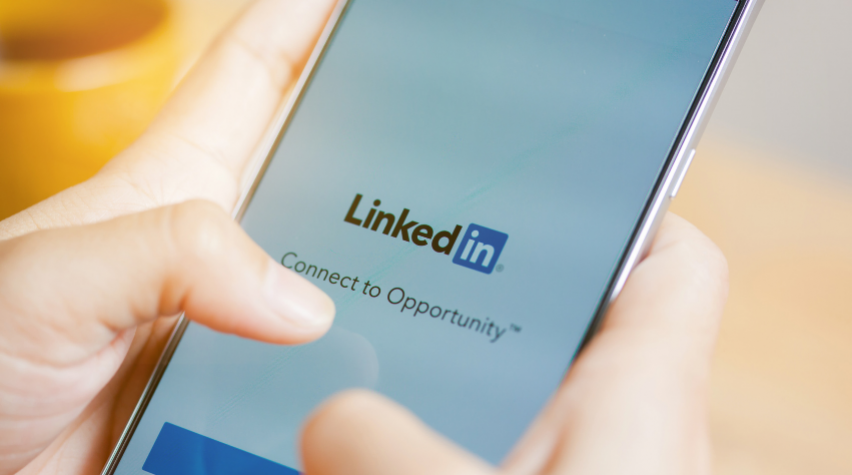
While it is not the largest social media platform (that distinction goes to Facebook), LinkedIn has a significant online presence of more than 756 million members in over 200 countries. Considered an online platform for professional networking, LinkedIn enables users to develop industry connections and present their professional brands.
A strong, regularly updated LinkedIn profile can open doors to a wealth of professional opportunities. According to the site, a complete profile garners 21 times more profile views and 36 times more messages from other LinkedIn members than an incomplete profile. These tips can help you create a profile that will be widely recognized by other professionals, decision-makers, and industry influencers.
Prepare in advance
“It’s important that your profile clearly states your role in each organization. What are your accomplishments and what impact did you have?” says Rama Kotti, a chemicals industry consultant based in India. To effectively answer these questions, he advises gathering your résumé, licenses, certifications, awards, and publication details before sitting down to complete your profile.
Use professional images
Members with professional headshots receive more profile views, says LinkedIn. Use a photo appropriate for your industry and current position or target job. Your photo should have a neutral backdrop and be free of distractions or other people. You can further customize the look of your profile by uploading a photo to replace the default background. One consulting engineer, for example, added a photo of himself leading a client training workshop.
Write a distinctive headline
Your headline appears directly below your profile photo, and should include accomplishments and professional certifications. Add keywords, descriptors, and deliverables as space allows. For instance, Alexandre Chernichenco, a project manager at Orica Mining Services, includes keywords such as leader, process safety, chemical engineering specialist, project manager professional, and Certified Six Sigma Black Belt in his headline. Hiring managers and other members will scan this information to get a better sense of your expertise and reputation.
Keep your contact details current
If your email or phone number are from two jobs ago, others will not be able to contact you. Review this section periodically to ensure it is current. In addition, be sure to include your country, zip code, and industry in your Contact Information section, as these are important factors in LinkedIn’s search algorithm.
Be authentic
Use the About section (formerly known as the Summary) to expand on your headline and focus on your most relevant career details and key accomplishments. “Answer ‘Who am I?’ in this section and show your identity and beliefs,” says Chernichenco.
Lisa Rangel, an executive résumé and LinkedIn profile writer adds, “Remove the fluff and clichés, and instead, jam-pack it with action-driven information and language, letting your personality shine through.”
Claim your vanity URL
“It’s a lot easier to point people to your LinkedIn profile when you have a direct link with your name on it. LinkedIn allows you to easily customize your profile URL,” says Rangel. At the top right of your profile, there is a prompt to edit and customize your public profile and URL.
Account for character limits
LinkedIn places character limits on both the headline (120 characters) and About section (2,000 characters). In addition, only the first 40 characters of your About section show up on some mobile screens. It is critical that your first few words entice people to click the link to read more.
Add your work history
Align your Experience section on your profile with that of your résumé. List your title, company, and job duration for your current position and at least two prior positions. Then, add your accomplishments and measurable results, such as how you cut costs or improved process efficiencies.
Keywords are important, because they enable others to find your profile via the search function. “Cut and paste your job descriptions into a word cloud generator, to identify keywords and acronyms to include,” suggests Rangel. Word (or tag) cloud generators can be found for free online and provide a quick visual representation of text data.
Include relevant skills
The Skills and Endorsements section allows your connections to see your core competencies at a glance, such as process engineering, process safety, or lean manufacturing. LinkedIn recommends you add at least five skills, but you can add up to 50. “Choose the skills that best represent your personal brand or the job you are seeking,” says Rangel. Ask your first-degree connections to endorse the skills you want to highlight. These endorsements are a signal that you are proficient at your work.
Aim for 100% profile completion
As you build your profile, LinkedIn indicates its strength as beginner, intermediate, advanced, expert, or all-star, based on the level of completion of the sections and your number of connections. In addition to following the above tips, complete the Education, Volunteer Experience, and Interests sections, and connect with at least 50 members. Doing so will place you among the 51% of LinkedIn members who have achieved all-star recognition and, as a result, stand out from the rest of the pack.
This article originally appeared in the Career Connection column in the August 2021 issue of CEP. Members have access online to complete issues, including a vast, searchable archive of back-issues found at www.aiche.org/cep.


